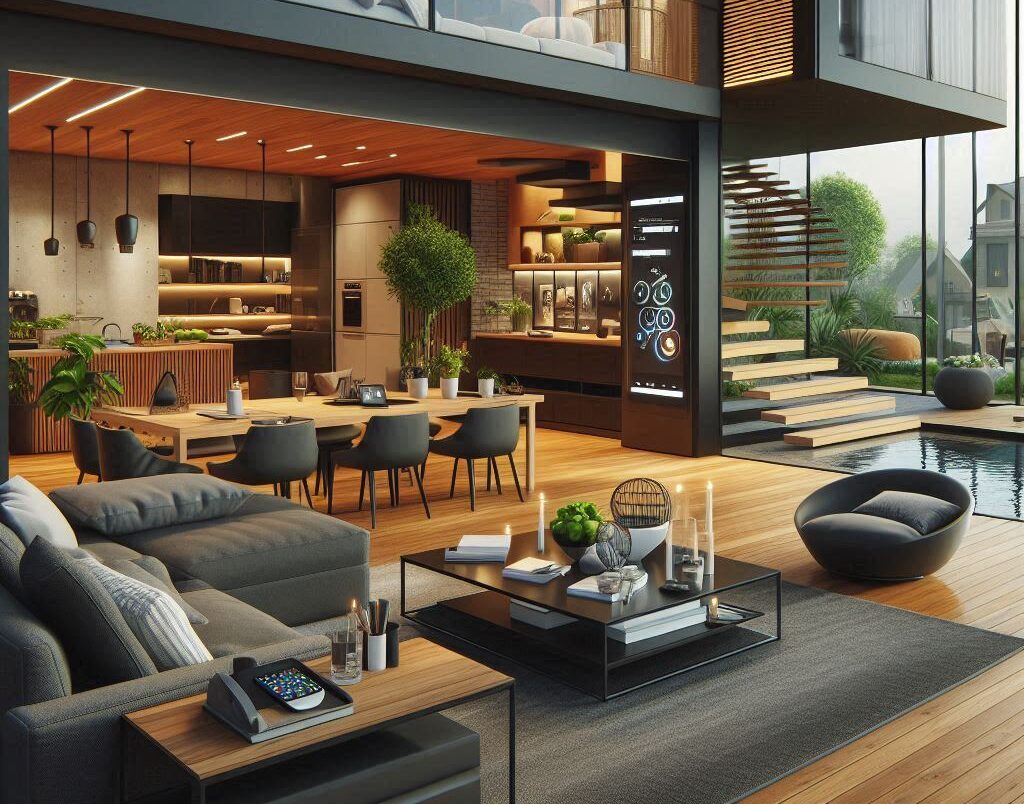Smart Homes Meet Aesthetic Design: The Future of Stylish Living in 2025

In 2025, the concept of a "smart home" has evolved far beyond voice-controlled assistants and automated lighting. Today, technology seamlessly integrates with interior design, creating spaces that are not only functional but also visually stunning. The marriage of smart homes and aesthetic design is redefining how we live, blending cutting-edge innovation with timeless style. Let’s explore how this trend is shaping the future of home decor and how you can incorporate it into your own space.
The Rise of Invisible Technology
Gone are the days when smart home devices were clunky eyesores. In 2025, technology is designed to be sleek, minimal, and invisible. Think hidden speakers, discreet sensors, and ultra-thin screens that double as art pieces when not in use. Brands are prioritizing aesthetics, ensuring that devices complement your decor rather than disrupt it.
For example, smart mirrors in bathrooms now feature built-in displays for weather updates, news, or even workout routines, all while maintaining the elegance of a traditional mirror. Similarly, color-changing LED lighting can be embedded into walls or ceilings, offering customizable ambiance without visible fixtures.
Voice-Activated Furniture: Where Form Meets Function
Imagine a coffee table that not only looks like a designer piece but also charges your devices wirelessly and adjusts its height with a simple voice command. In 2025, voice-activated furniture is becoming a reality, combining practicality with modern design.
These pieces are crafted from high-quality materials like polished wood, marble, or brushed metal, ensuring they fit seamlessly into luxurious interiors. Whether it’s a sofa with built-in speakers or a dining table that doubles as a charging station, smart furniture is redefining how we interact with our homes.
Minimalist Smart Home Hubs
The cluttered control panels of the past are being replaced by minimalist smart home hubs that blend effortlessly with your decor. These hubs are designed to look like decorative objects—think sculptural accents or sleek tablets that match your interior theme.
For instance, a smart home hub disguised as a modern art piece can control your lighting, temperature, and security system while adding a touch of sophistication to your living room. This trend emphasizes the importance of design-first technology, where functionality doesn’t compromise aesthetics.
Sustainable Smart Homes
As sustainability becomes a top priority, smart home technology is aligning with eco-friendly design principles. Energy-efficient devices, such as smart thermostats and solar-powered lights, are being integrated into homes with a focus on reducing environmental impact.
In 2025, homeowners are opting for sustainable materials like reclaimed wood, recycled metals, and biodegradable plastics in their smart home devices. This not only enhances the aesthetic appeal but also supports a greener lifestyle.
How to Incorporate Smart Aesthetic Design in Your Home
Ready to embrace this trend? Here are some tips to seamlessly blend smart technology with stylish decor:
Choose Discreet Devices: Opt for smart home gadgets that are designed to be unobtrusive, such as hidden cameras or slim, wall-mounted control panels.
Invest in Multi-Functional Furniture: Look for pieces that combine technology with design, like a smart bed with built-in sleep tracking or a desk with wireless charging capabilities.
Use Lighting as a Design Element: Incorporate smart lighting that can change colors and intensity to match your mood or decor theme.
Prioritize Quality Materials: Select devices and furniture made from premium materials that complement your interior style.
Create a Unified Look: Ensure all your smart home devices follow a cohesive design language, whether it’s modern, rustic, or industrial.
The Future of Smart Aesthetic Design
As technology continues to advance, the line between smart homes and aesthetic design will blur even further. In the coming years, we can expect to see more innovations like self-cleaning surfaces, AI-powered decor recommendations, and holographic displays that double as art installations.
The key takeaway? A smart home no longer means sacrificing style for functionality. In 2025, the two go hand in hand, creating spaces that are as beautiful as they are intelligent.
Conclusion
The fusion of smart homes and aesthetic design is transforming the way we think about interior decor. By integrating technology seamlessly into our living spaces, we can enjoy the benefits of a connected home without compromising on style. Whether you’re renovating your entire house or simply upgrading a single room, embracing this trend will ensure your home is both futuristic and fashionable.
Stay ahead of the curve and let your home reflect the perfect balance of innovation and elegance. After all, in 2025, a smart home isn’t just about convenience—it’s about creating a space that inspires.
